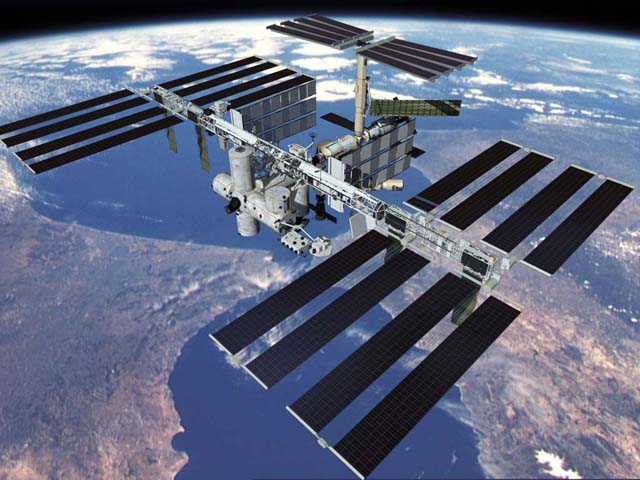For reference purposes, the International Space Station looks like this:
...whereas a brick moon looks like a giant ball of bricks, but here's a picture anyway:
A few fun observations from "The Brick Moon", with comparisons to the ISS or other ISS-era phenomena where enlightening: (All citations from this version, and no, I have not read the other stories therein)
- Early in "The Brick Moon", it is noted that the bricks will cost sixty thousand dollars. (5) At today's purchasing power, that would be $1.08 million. By comparison, the ISS has cost $150 billion so far. This difference is at an order of magnitude of over 10^5. Suffice to say, had a brick moon been feasible, it would have been so affordable many private citizens could go to space. Finally, we could re-enact Space Jam.
- Characters' "college bills" are unpaid. (5) This approaches a Looking Backward level of hyper-accurate eeriness in 2016.
- A minor character is named Dr. Peabody. (6) In this era, that's adorable. (Hey, Mr. Peabody could totally have a doctorate.)
- Napoleon III of France gets a brief mention. (9) Much like the 1949 classic movie The Third Man, which is set in post-WWII occupied Vienna, "The Brick Moon" takes place during a unique time. There was only a three-year span in which Canada was an independent country and Napoleon III was in charge of France. If only "The Brick Moon" had mentioned Canada...
- People burn up while passing through the atmosphere. (17) Not a vessel - people. This is chilling yet realistic.
- At one point, Hale opens a paragraph with "Now you know, dear reader..." (19) Ironically for a work meant to be futuristic, this sort of language was far more common in didactic 18th-century fiction.
- The phrase "no matter why!" is used to explain why an observatory is "dormant". (20) This has to be one of the most egregious examples of handwaving I've ever seen.
- The word "equinoctial" comes up. (26) I don't learn new words as often as I'd like, so I'll make sure to use this one in March.
- This is actually a quotation, albeit from one of the characters rather than from Hale himself: "Of course the pendulum clocks all went wrong till the men got them overhauled, and I think watches and clocks both will soon go out of fashion." (31) I felt a certain je ne sais quoi while reading this line with multiple clocks in adjoining rooms, not to even begin on my girlfriend's Fitbit. Looking Backward this section is not.
"The Brick Moon" lacks compelling characters and settings, which is unfortunate given the potential it had. Who would go into space? What would the inside of a brick moon look like, in more detail than the letter-coded rooms? What would the moon's intended purpose be other than, as the story states early on, to measure longitude? I didn't get that exploration itch here. It's still an interesting read, if only to see, 147 years later, a theory that a space station could exist before the Wright Brothers flew. Huge respect to Hale for noting the atmosphere's ability to burn things.

No comments:
Post a Comment